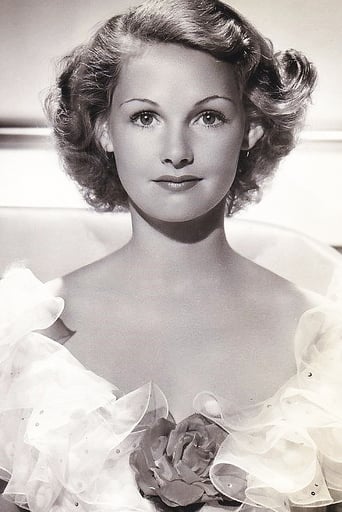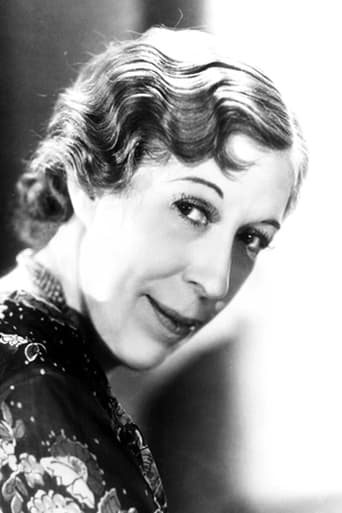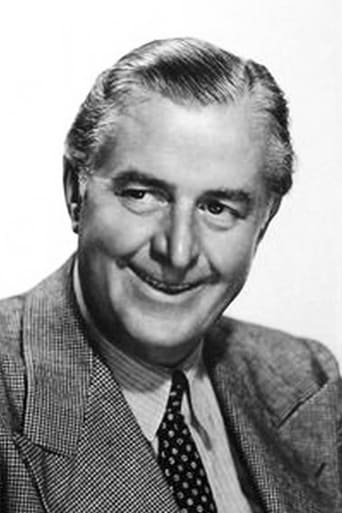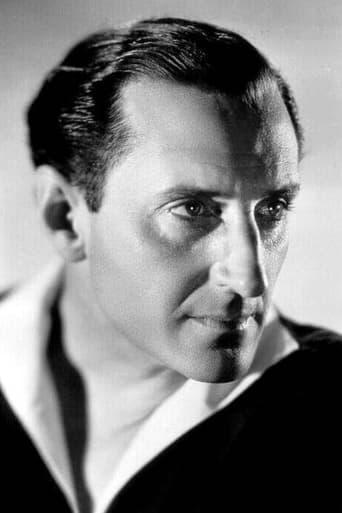Vashirdfel
Simply A Masterpiece
Stellead
Don't listen to the Hype. It's awful
Bergorks
If you like to be scared, if you like to laugh, and if you like to learn a thing or two at the movies, this absolutely cannot be missed.
Deanna
There are moments in this movie where the great movie it could've been peek out... They're fleeting, here, but they're worth savoring, and they happen often enough to make it worth your while.
st-shot
With the exception of David Copperfield this is probably Hollywood's most accomplished treatment of a Charles Dickens work. Sumptuously mounted and produced in grand MGM style it has the the perfect voice and charm of Ronald Colman as Sidney Carton, a stalwart supporting cast and magnificently choreographed large scale crowd scenes depicting the out of control energy and fury of the revolt and subsequent reign of terror. Colman's charming cynic wins us over early given he is surrounded by just cause with a Dicken's roster of pompous bores and hypocrites caught up in their own self importance. He drinks and offends but who can blame him. The sardonic wit of the film extends beyond Carton though by way of Dickens "cinematic" descriptive style that sharply conveys through both character and setting distracting dark humor over the grim proceedings by intermingling comic portraits with the sober cruel personages while making incisive social commentary. A laudable supporting cast consisting of Reginald Owen, Edna May Oliver, Billy Bevan, Blanche Yurka's Madame DeFarge and Basil Rathbone's venal Marquis de Evermonde truly do bring the pages to life, though I will admit an Oliver, Yurka death match near the end does take liberties with the tome. Oliver Marsh's photography is commendable throughout whether conveying panorama in the excellently edited storming of the Bastille and raucous courtroom scenes or the tight tension filled cramped ominously lit interiors of cells or the De Farge wine shop. With Colman in the lead and every MGM department clicking on all cylinders Tale of Two Cities remains fresh and vital 75 years later. It is one of those rear films that embraces rather than wrestle with a classic literary work which it does here with grandeur and confidence.
wes-connors
MGM's Ronald Colman version of Charles Dickens' "A Tale of Two Cities" has more in common with the best of films, and less in common with the worst of films. Producer David O. Selznick guaranteed it a nice budget, which results in a some finely-edited incidental scenes. Every so often, you are startled by how well something is done - but, generally, the story goes through the motions. It is nice to see Mr. Colman perform the "Sydney Carton" role. The other leads do not work well with him, however. Colman's "Carton" is supposed to be identical in appearance to the "Charles Darnay" character played by Donald Woods. The two men are vaguely similar types, but Mr. Woods is a bigger, taller man; and, his youth makes Colman look a little old for the part. Elizabeth Allan (as Lucie) is pretty; she looks good with Woods, but has no little chemistry with Colman.The film offered a grand supporting cast - all eligible for the first "Best Supporting" Oscar given, but none were nominated.The best supporting actor almost looks to be Basil Rathbone, with his cruel depiction of French aristocracy; but, he doesn't appear much, and Mr. Rathbone could perform the part in his sleep. By the time he loses his tenuous sanity, fatherly Henry B. Walthall (as Alexandre Manette) really takes supporting actor honors; and, this was the last great character role for Mr. Walthall. For feminine honors, it's a battle between Edna May Oliver's wise-cracking English maid and Blanche Yurka's violently-knitting French peasant. They even have a supporting actress dogfight. Many admire Ms. Yurka's efforts, which are considerable; she chews the scenery and spits it out. Finally, by the time "The End" has come, it's very apparent this "Tale of Two Cities" has become a "Christmas Carol" - of course, as in the original work, Dickens would prefer the comparison to be more allegorical.******* A Tale of Two Cities (12/25/35) Jack Conway ~ Ronald Colman, Donald Woods, Henry B. Walthall, Blanche Yurka
kenjha
The Dickens novel is brought to the screen in a typically lavish Selznick production. The cinematography and sets are impressive in recreating revolutionary France. Colman is well cast as the tragic hero, managing to make Sidney Carton debonair yet resigned. Unfortunately, the supporting cast is not up to par. Allan overacts, but is a model of restraint compared to Yurka, a stage actress making her film debut. The latter is laughably over-the-top as Madame De Farge. The revolution scenes are well done but are ruined by cheesy captions on the screen such as "WHY WHY WHY," rendering the whole thing ludicrously melodramatic.
richard-1787
I hadn't seen this movie in almost 50 years - I saw it once when I was a kid on TV. So I decided to see it again, and I'm glad I did. Dickens was not an author of subtleties, and Tale of Two Cities isn't subtle. There are the oh-so good characters, like Lucie Manette, who is boring, and her father, Dr. Manette, who is only slightly less boring. There is the evil Marquis d'Evremond, who is thoroughly evil, but not at all boring, especially as brought to life by Basil Rathbone in one of his many great performances. There are the caricatural secondary characters, such as Miss Pross, also wonderfully brought to life by the indomitable Edna May Oliver.And there is weary Sydney Carton, who sees nothing to live for and so drinks his life away. Yet Carton occasionally glimpses what his life could have been, and then, for a few brief moments, there is real depth to him. Fortunately, in a very unevenly cast movie, Carton here gets played by Ronald Coleman. And Coleman here gives a performance such as you will never forget. Yes, there is his wonderful voice with all the modulations of tone to suggest every nuance. And a face to match. While the other characters are either boring or funny or horrifying (Mme de Farge), Carton in his performance becomes a moving individual. Why Coleman didn't get at least an Oscar nomination for the part I cannot explain. (Paul Muni won it that year for playing Pasteur, a great performance, and the other four nominees were all deserving, but since in those days the nominees were not limited to 5 as they are now and since Coleman's performance is certainly as good as Spencer Tracy's in San Francisco, I do not see how Coleman got left out.)There are other things to recommend the movie as well. The storming of the Bastille is powerfully filmed. The trial scenes are grotesque and probably exaggerated, but memorable. But Coleman as Carton is remarkable, and if you haven't seen it and you enjoy a great performance, this is one to treat yourself to. The last lines (It is a far, far better thing ..., etc.) have been caricatured many times, but when Coleman recites them you won't laugh. It's truly very moving - though of course a very conservative view of the French Revolution.-----------------------I just watched this again tonight after the passage of a few more years. I'm reading the novel now to see what changes MGM made. I could go on about those, and they are interesting, but I haven't got the space necessary. The major ones come near the end, when everyone goes back to Paris. The two trials of Darnay are collapsed into one in the movie, and the reading of Dr. Manette's letter, which is VERY long in the novel, is shifted to Mme de Farge, giving Blanche Yurka the acting opportunity of a lifetime as she recounts her past and sways the jury/mob to condemn Darnay. The movie never reveals that the cowardly and opportunistic Barsad is Pross's long-lost brother. Etc.Repeated viewing makes this movie look even better. As was often the case with epic movies in the 1930s, the smaller roles here are brilliantly realized. Claude Gillingwater, the Jarvis Lorry in this version, appears well down the cast list, though his is a major role. He does a superb and, when necessary, very understated job here. Isabel Jewell, by overplaying the Seamstress in the final scene, sets off Ronald Colman's performance, which is so deeply moving for being so controlled. Blanche Yurka and Edna May Oliver, though very different, are both first rate. Pross comes off as a lovable caricature, it's true, but Yurka makes Mme de Farge a very real study in hatred. Only the romantic leads, Donald Woods (Darnay) and Elizabeth Allan (Lucie), are uninteresting. I don't know why MGM used her in both this and David Copperfield. She is so bland.But this movie is not bland, not by a long shot. I can't recommend it too highly.





